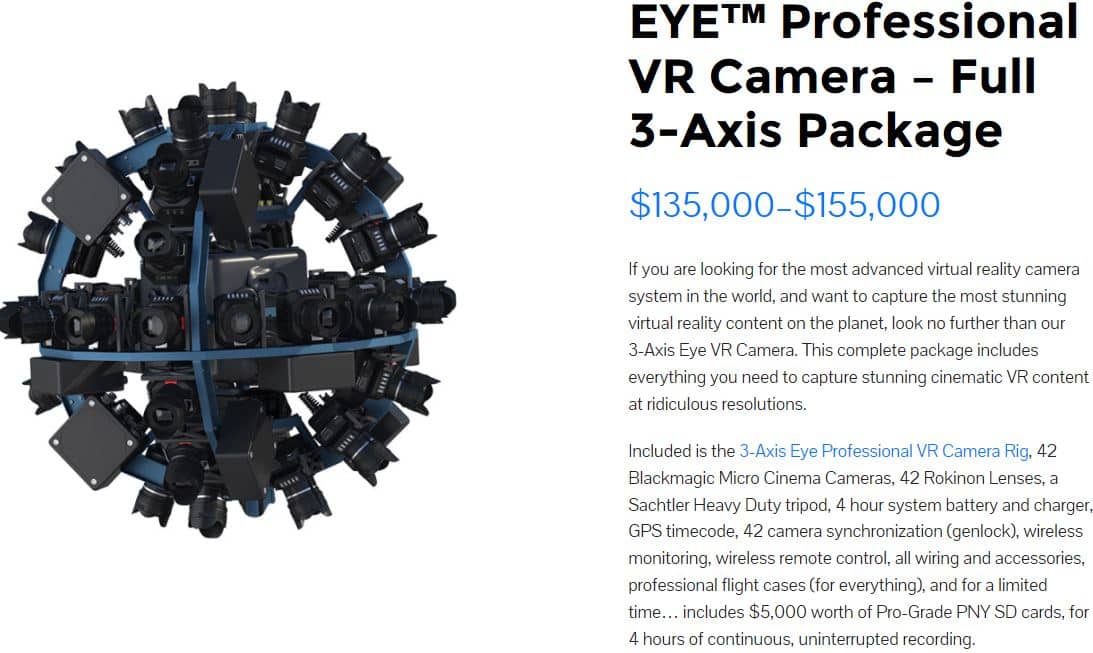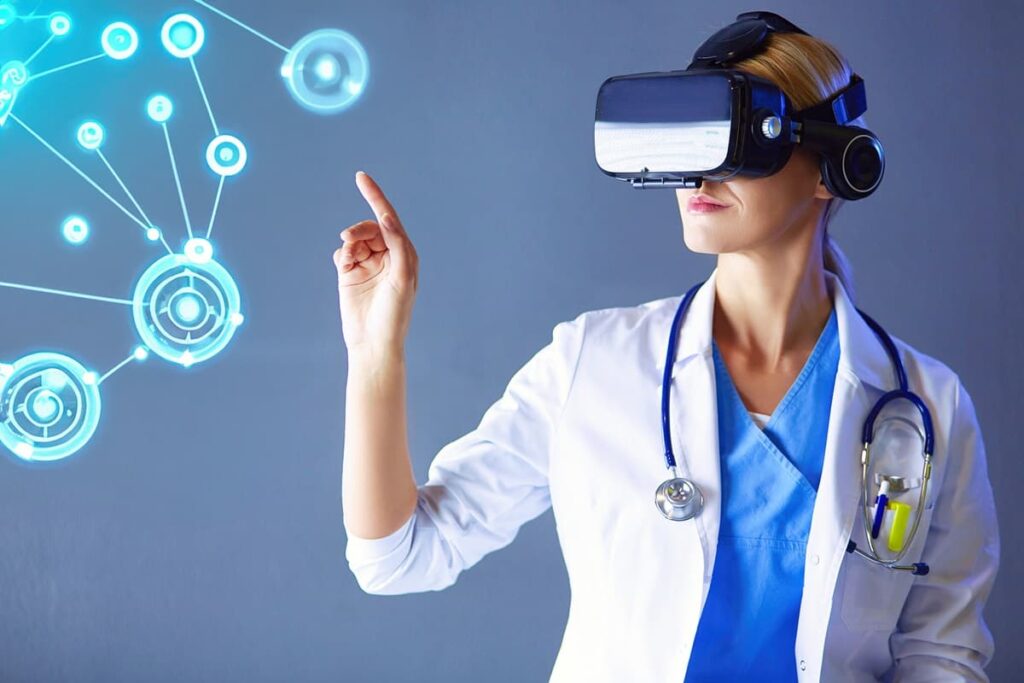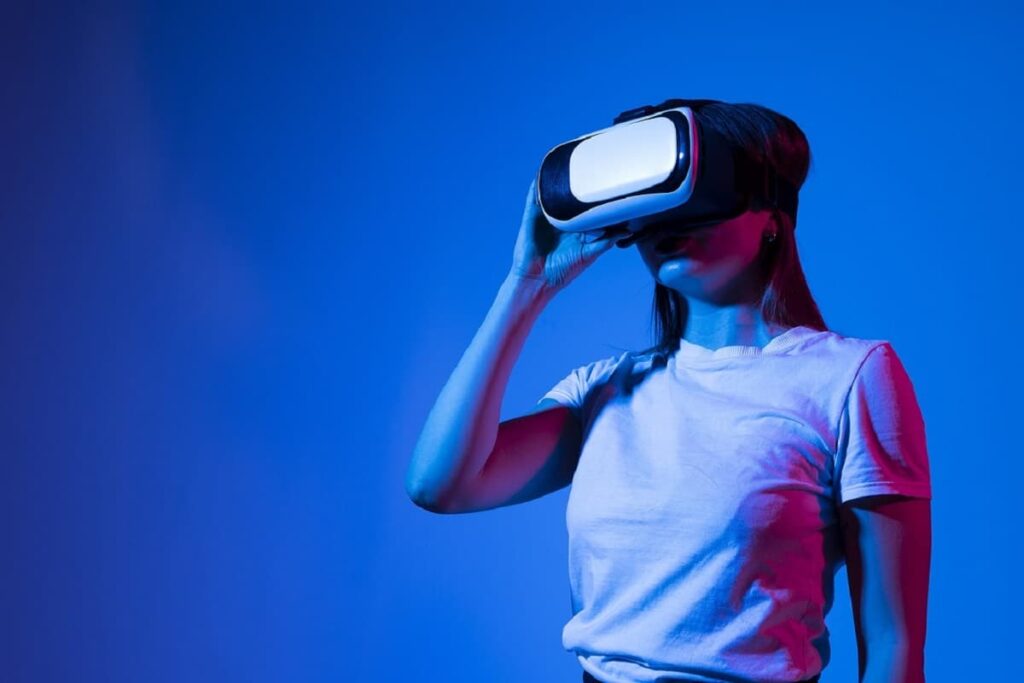Real-Time Virtual Reality (VR) – The Ultimate Experience
Table of contents
Table of contents

In a recent article, we talked about how we selected one of the best virtual reality headsets available today as a Christmas present for the whole family to enjoy. When looking for the perfect VR headset, we laid out some use cases like watching movies and traveling. In a recent article we talked about how tricky it is to create virtual reality movies and that they are probably best referred to as “virtual reality experiences”. So what about virtual reality travel experiences? Not just watching a pre-recorded video using a virtual reality headset but actually travelling while using real-time virtual reality. Here’s what we mean by that.
In a recent article, we talked before about humanoid robots. The context of that topic was around humanoid robots that operate using artificial intelligence. But what if you could take control of a humanoid robot? What if that humanoid robot could walk around while you controlled it, and wherever you looked, it looked? What if you could also tell it to do things like “go pet that cat” or “open that door”? Sure, it might have a tough time getting through airport security, but it seems like there are few things you couldn’t do with such a robot.
Now let’s take this a step further. You know those wet suits that divers wear? What if a wetsuit was designed as a body mesh that would make the humanoid robot mimic your very own movements and provide you with full body haptic feedback at the same time? You could put on such a wetsuit, put on your VR headset, and let the games begin. Your every motion is now mimicked by the robot and you can now “feel” virtual reality. That’s the ultimate way to travel and opens the door for virtually any number of virtual reality applications you can think of.
So what do we need to make this all happen?
- Humanoid robot that can walk
- Method to control said robot
- Wetsuit that allows full body haptic feedback
- VR camera attached to robot that can record in real-time
- Data feed that is fast enough to capture the data and relay it in real-time
It’s the last part that’s a bit tricky and which is needed for the travel use case we described above. If we can master real-time virtual reality, we can do any number of exciting things like the use case we presented above. Just being able to observe a place in “real-time virtual reality” opens up a plethora of applications aside from just travel. Could we build such a travel solution with technology that’s available today? Let’s see if we can. First, we need a company that can stream live real-time virtual reality.
Streambox
Founded in 1999, Seattle based company Streambox has taken in an undisclosed amount of funding to develop “unique IP based video streaming solutions over low bandwidth connections“. Now they have added a VR offering to that which is currently in beta and supports Oculus Rift. It’s not like this is something ground breaking since 360 degree video support was released last year by YouTube allowing users to view and upload 360-degree videos. You can buy a “cheap” VR camera like this one and create your own content to upload to YouTube as seem below:
In order to see that live video in virtual reality, all you have to do is put on your Oculus Rift and you’re good to go! Applications are pretty much anything you can think of from live church services to live concerts. Using the Streambox solution, we could probably attach a cheap camera to the head of our humanoid robot and we’re good to go but what if we wanted to spend some serious money on our VR recording solution? Our next company has a much more sophisticated solution which also means much more $$$.
Voysys + OdenVR
Voysys is a Swedish company that has taken in an undisclosed amount of funding to develop systems and solutions for real-time virtual reality. The following statement made on their website sums up the size of the opportunity we have for real-time virtual reality:
We also foresee that much of the machines and processes that humans control today will be remotely operated in only a few years.
Voysys produces a multi-camera live VR/360° production software solution called VOYSYS VR PRODUCER which supports any sort of VR hardware you might have on hand. This software solution is built for real-time, with typical latency of 50-200 ms measured from light entering a lens to light exiting a VR headset or display. We were quite surprised to see just how quickly these hardware packages start to add up:
In addition to their VR software platform, Voysys also markets industrial solutions under the OdenVR brand. The industrial solution includes a hardware/software called “The Cube” which provides real-time virtual reality streaming to an Oculus Rift and it’s currently being shipped to select customers. We could take “The Cube”, attach it to our humanoid robot, and then have live streaming virtual reality that’s of a higher degree of quality but also at a higher price point.
Still not happy with the quality? There’s only one thing left to do. Pay a visit to Southern California design studio 360 Design, a team of engineers, camera operators, production crew, artists and experts making professional tools for 360 video and virtual reality. Pull out your checkbook and pick up one of these bad boys:
Attach that to the head of your humanoid robot and now you have 42 cameras recording everything in every direction at mind blowing resolutions. It’s doubtful that you could live stream that much virtual reality data in real-time but this is what we need to be shooting for.
So now that we have our real-time virtual reality feed sorted, what about the full body haptic feedback suit? As it turns out, there’s a startup that’s got that covered as well.
AxonVR
Just a few weeks ago AxonVR™, the pioneer in advanced haptic technology and creator of the HaptX™ Platform, announced today that it secured $5.8M in a recently-completed seed funding round. This represents the largest investment to date in a virtual reality haptics company. Below you can see the extent to which this suit creates “virtual reality that you can feel“:
The above solution allows you to literally float through the air while walking, running, jumping in virtual reality while remaining stationary. The haptic suit allows you to feel everything around you. What an ultimate way to experience the world of real-time virtual reality.
While we’ve given you just a few examples of companies working on real-time virtual reality applications, there are likely dozens of startups that are looking to play in this space. Expect to see a slew of startups trying to create verticals for each of these application types, like NextVR which we profiled before. NextVR wants to corner the market on offering concerts and sporting events in real-time and also recorded for later viewing.
Conclusion
We’d expect to see an eventual consolidation of these companies such that there are a few dominant providers of VR recording hardware, a few platform providers used to consolidate the data and stream it, and then any number of startups that establish themselves in various application verticals. If you’re one of these companies, drop us a line and we’ll look to feature your company in a future article.
Sign up to our newsletter to get more of our great research delivered straight to your inbox!
Nanalyze Weekly includes useful insights written by our team of underpaid MBAs, research on new disruptive technology stocks flying under the radar, and summaries of our recent research. Always 100% free.



















